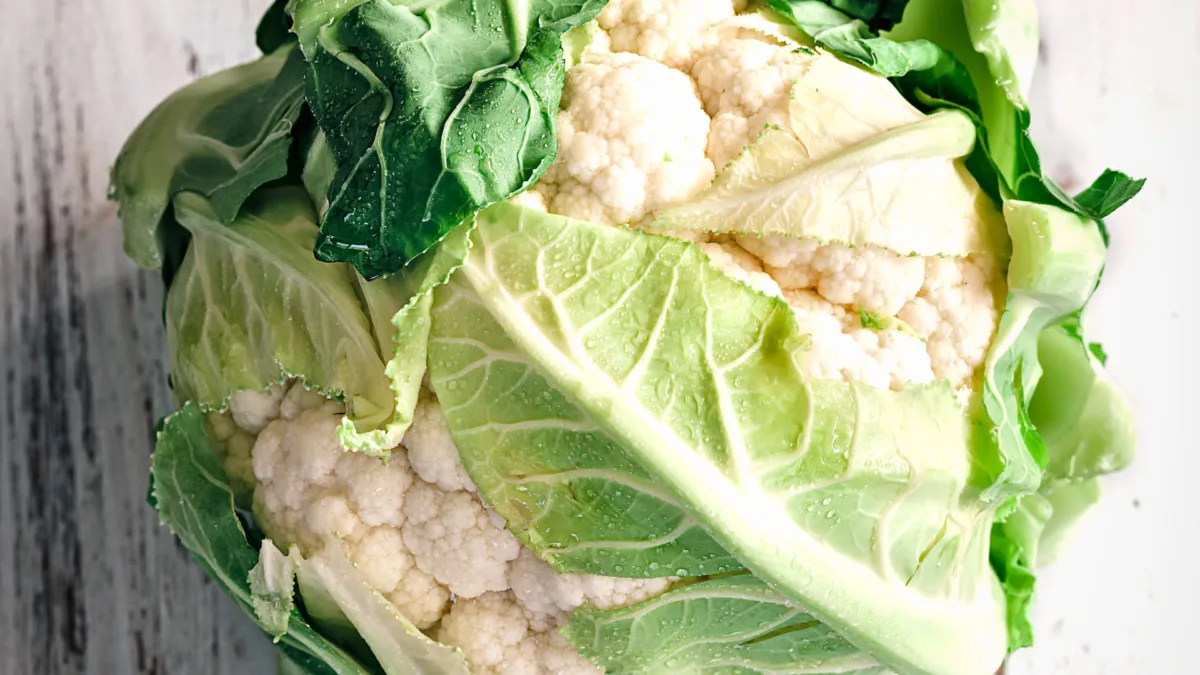Cauliflower is one of the most versatile vegetables you can grow, and it’s great to eat year round. You can eat the leaves and stalks as well as the florets, so you’ll have plenty of options for meals. In addition, cauliflower is low in calories yet high in fiber and vitamin C along with other nutrients.
History
Cauliflower is believed to have originated in Asia and the Mediterranean, but it wasn’t until the 16th century that Europeans began growing cauliflower. In the late 1890s, farmers in California started cultivating cauliflower on a large scale.
Cauliflower and broccoli
While there are some differences between cauliflower and broccoli, they are very closely related, and actually share a lot in common.
Their main difference is the color of their heads. Broccoli forms a green head, which turns purple, while the head (also known as “curd”) of the cauliflower remains white. This is because the leaves of the cauliflower form a protective shield around the head. This shield protects against the sun and prevents the formation of chlorophyll. It is this chlorophyll, which turns the broccoli’s head green. The cauliflower curd is actually the flowering stalk. You will harvest the curd just before the flower opens.
Growing cauliflower
Growing cauliflower isn’t as easy as growing cabbage or broccoli, but if you are up for the challenge, here’s how:
You can grow from seed or buy a seedling. As with other brassicas, cauliflower needs a rich, moist soil and should not suffer from drought stress during its early growth period. The best temperatures to grow cauliflower are between 50° F and 70° F (10° C – 21° C).
Grow cauliflower from seed
You can start your seeds indoors. The best growing season depends on the variety and the region where you live. But, when you start your seeds indoors, you can extend this season. Even if it is still too cold or too warm outside for the next weeks, you can start them already indoors. So, you can start for example six weeks before the last frost. And this way, you can grow cauliflower even in regions, where otherwise your time window would not be big enough.
Best planting location for cauliflower
Cauliflower needs full sun to thrive, so choose a spot that gets at least eight hours of direct sunlight each day. The best location is one where the soil drains well and has good drainage. If you have heavy clay soil or if your garden site tends to flood during heavy rainfall, consider planting cauliflower in raised beds filled with rich loam or composted topsoil (or another type of compost).
Cauliflower can be planted in rows that are 30 inches apart and should be spaced two feet apart within the row. But as always, it depends on your variety, how much space you actually need. Read the description of the seedlings/seeds for more precise instructions or ask in your local gardener shop, where you buy your supplies.
The plants will grow best if there is plenty of organic matter mixed into the soil before planting—add well-aged compost or manure before planting your seedlings. You can read more about compost in our guide to create good compost.
Care during the growing season
Ensure that the soil is moist throughout the growing season. It should not dry out, nor should you water it irregularly. Both can lead to “buttoning”, where the plant forms small button-sized heads instead of one large round one.
You can use mulch in your garden bed to help keep moisture content consistent and prevent weeds from growing up through the soil surface (Read more on why it is good to mulch in our article Why you should mulch your garden). Mulch also helps retain heat during cold nights in springtime; use a frost cover if temperatures get too low for cauliflower’s liking. If it gets too hot (75° F plus), make sure to shade your plants, mulch and use more water to keep the soil cooler. Although you want the plant to be exposed to sunlight as much as possible, make sure its leaves protect its head from direct exposure especially when maturing. In case pests become an issue like slugs/snails or aphids/cabbage moths etc., there are insect nettings available which prevent most of those pests! Aphids are a bit more difficult to handle. It is good to catch them early and remove them.
How to harvest cauliflower
If you are growing cauliflower, it’s important to know that this vegetable needs a long time to mature. Depending on your variety, you may have to wait up to five months until your cauliflower is mature enough. During this time, it’s important not to let the plant grow too big or tall.
The head should be nice and tight when harvesting; When you wait too long, the curb loosens. That is not a drama, as even a loose head is still perfectly eatable. But you should harvest it now. If you wait longer, the taste of your cauliflower will change and the fruit will become bitter.
To harvest your Cauliflower: Use a knife and cut through one side of the stalk just below where it meets with its head (it should snap off easily).

